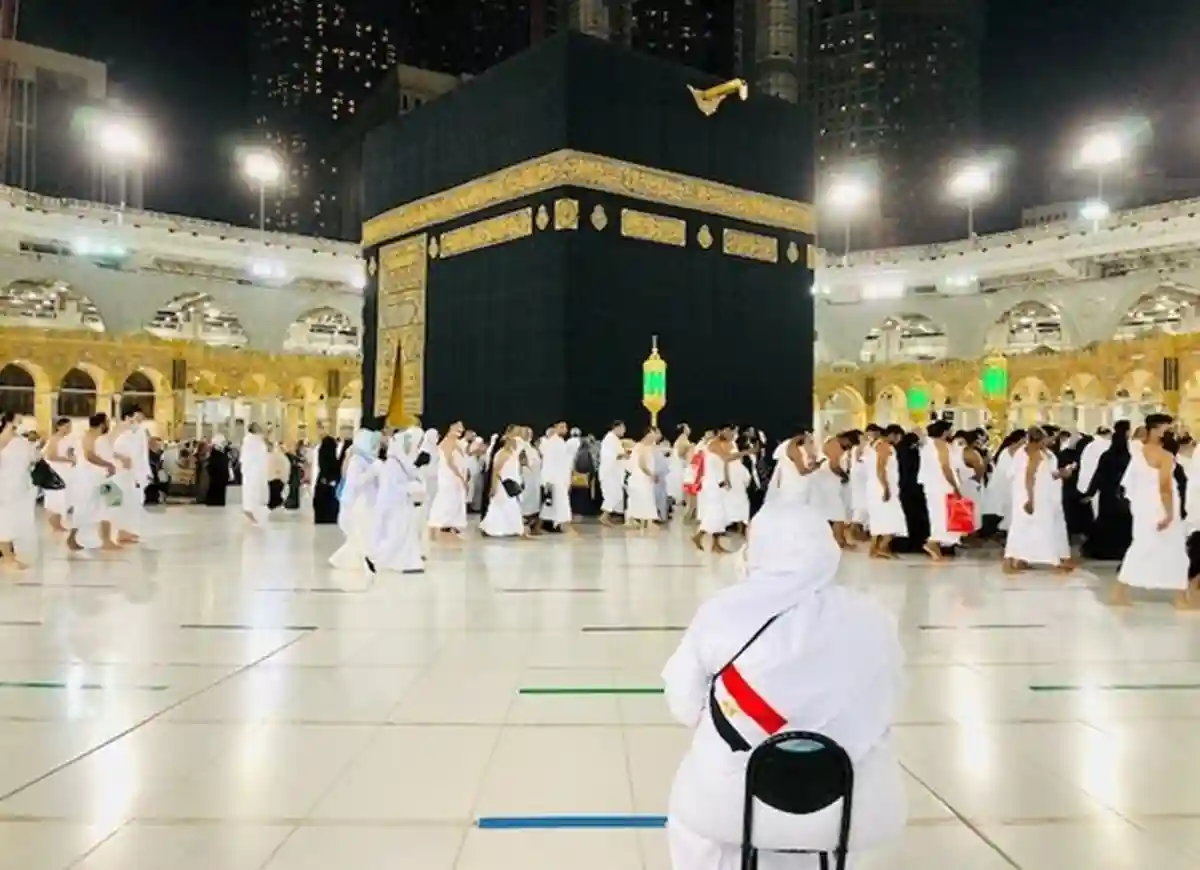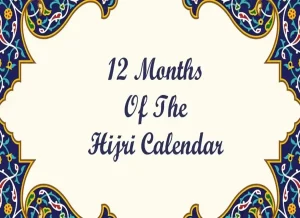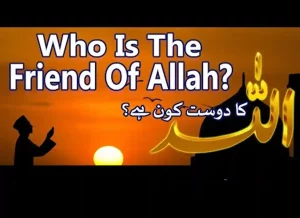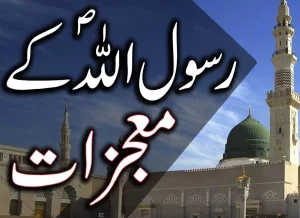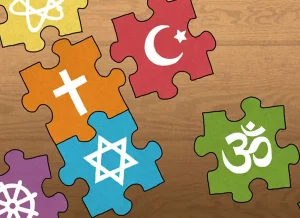Hajj Demystified: A Definition
An Intro For Non-Muslims to The Sacred Pilgrimage – Hajj Demystified refers to an approach that aims to simplify and clarify the concept of Hajj for those who may not be familiar with it.
Here’s a breakdown of the key components:
- Hajj: The fifth pillar of Islam, which is a mandatory pilgrimage undertaken by Muslims who are physically and financially able to do so.
- Demystified: Made simpler and easier to understand by removing or explaining any complexities or misconceptions associated with the topic.
- 1 ABRAHAM
- 2. THE HAJJ
- 3 EID-UL-ADHA
- 4 LUNAR CalENDAR
- 5 In The FOOTSTEPS
- 6 PLACES IN HAJJ
- 7 VOCABULARY OF HAJJ
- 8 DISCUSSION QUESTIONS AND SUGGESTED activities
- 9 SUGGESTED STUDENT Activities
Islam includes two significant religious festivals. The first is celebrated following the end of Ramadan which is the Islamic month when Muslims (believers who believe in Islam) are on a daily fast from dawn to sunset part of their effort to self-purification and improvement. This is referred to in the form of Eid ul-Fitr (Festival of Breaking the Fast).
The second most important Islamic celebration is held during the the Hajj which is a pilgrimage that takes place annually that takes place annually to Makkah (Mecca). The Hajj is a week-long celebration that occurs approximately two months and ten days after Ramadan closes, in the Islamic month of Dhul Hijjah and the culmination is that is known as Eid ul-Adha (Festival of Sacrifice).
The Hajj is a series of ceremonies that are meant to represent the core beliefs of the Islamic religion, and to remember the trials of the prophet Abraham along with his loved ones.
More than two million Muslims make the pilgrimage every year as well as the rest of the more than one billion Muslims all over the world observe the Eid festival along with the Hajj.
To teach students about the importance of the holidays of Islam teachers could print pages from the “Information for Students” pages of this pack and hand the pages for their pupils.
After allowing students 15-20 hours to go through the pages teachers can utilize the questions to guide discussions and prompt responses from students. A few ideas for student activities are included in the packet.
Also Read: Historic Gathering: Saudi Arabia Commences the Largest Hajj Pilgrimage in History
ABRAHAM
Abraham is a hero adored in the hearts of Muslims, Jews, and Christians alike for being a holy person who lived more than four millennia long ago. His story is recorded in the Bible and also in the Qur’an (the Muslim holy book).
Abraham is thought to be the founder of monotheism also known as “belief that there is One God,” who wanted to establish a personal connection with God.
He left his home town of Ur in Mesopotamia after protesting against the polytheistic practices of his people and later moved to Egypt along with his loved ones. He later escorted the wife of one of them, Hajar along with their newborn son, Ishmail to a deserted Valley in Arabia and then left the two in trust of God’s promise of care for the two of them.
Hajar worried about her baby’s food was scouting the surrounding area in search of food and water. According to the Qur’an in response to Hajar’s prayers, a stream suddenly gushed out at the feet of Ishma’il, allowing them to satisfy their thirst.
Hajar was climbing the nearby hills looking for food, and was looking for caravans that appeared on the horizon. Some traders came to the valley and sought Hajar’s permission to let their camels drink water.
As time passed, traders settled in the small valley and the settlement eventually grew to become the capital city Makkah. Abraham visited periodically to visit and, when Ishma’il was just thirteen years older He and Ishma’il built the Katbah which was a cube-shaped empty structure, to be a space that was dedicated to the worship of God the one God. In the end, Makkah became an important trading center at when the Prophet Muhammad who lived about twenty-five hundred years after.
Also Read: Saudi Arabia Launches Unified Visa Platform ‘KSA Visa’ – A Boon for Indian Hajj Pilgrims
THE HAJJ
In commemoration of the struggles in the life of Abraham as well as his entire family members in Makkah and the events that led to Abraham’s willing sacrifice of his son as a response to God’s commands, Muslims make a pilgrimage to Makkah at least once during their lives.
The Hajj is among the “five foundations” of Islam which is an essential element of Muslims practice and practice. Muslims from across the globe comprising those from the United States, travel to Makkah (in the present-day Saudi Arabia).
When they arrive in the holy city Muslims undergo a ritual in consecration (dedication) also known as sheam and remove their everyday attire and wearing the simple pilgrims’ attire. They wear two white sheets that are seamless for males, and basic white scarves and dresses for women.
The white clothing is symbolic of the human race’s equality together before God as all pilgrims are uniformly dressed. The status and wealth of the pilgrims do not matter anymore for pilgrims, the equality of everyone before God is the most important thing to consider.
When they arrive at Makkah when they arrive in Makkah, the pilgrims take part in the first tawaf, which is an elongated in a counter-clockwise direction through the Ka’bah. While they are doing this they chant “Labbayka Allahumma Labbayk” meaning “Here I am here to serve you and, O God”Here Ich bin!”
The purpose of the tawaf is to bring awareness to Muslims to the idea that God is the source of their existence and the basis of all meanings in life and that every person’s greater self-identity is due to being a part of the community of Muslim believers, referred to as the Ummah.
Pilgrims are also able to perform the sa’i. It involves moving seven times between small hills called Safa and Marwah in a retelling of an account of Biblical and Qurtanic Hajar’s search for life-giving food and water.
On the next, first day of Hajj (8th of Dhul-Hijjah) The two million pilgrims journey a short distance to the Plain of Mina and set up camp there. From Mina the pilgrims journey on the next early morning towards the plain of Arafat in which they spend the whole day in prayerful prayers and devotion.
In the evening, pilgrims relocate and stay at Muzdalifa located on a location located between Mina as well as Arafat. Muslims remain overnight and perform various prayers at the site.
The pilgrims then come back in Mina at the time of 10 and throw seven stones at a pillar of stone that is a representation of Satan. The symbolic symbolism is Abraham throwing rocks at Satan as he attempted to stop Abraham from the sacrifice of his son.
The pilgrims then offer an animal, recalling Abraham’s story, who as a substitute for his own son sacrificed lamb which God given to be a substitute.
The meat of the killed sheep is then distributed to friends, family members as well as the poor and in needy members of the community. Following the sacrifice, the people return back to Makkah to conclude the formal rituals of Hajj with the final tawaf and sa’i.
Muslims believe that the rituals associated with the Hajj were ordained by God and were taught by prophet Muhammad. Muslims believe that, since the period of Adam the world has seen many prophets, which include the well-known names like Noah, Abraham, Moses, Jesus, and David and they believe that Muhammad was the last Prophet of God.
It is believed that the Hajj has been designed to help develop God consciousness and a feeling of spiritual advancement. The Hajj is believed to provide an opportunity to ask for forgiveness for the sins that have been accumulated throughout life. Prophet Muhammad claimed that those who make the Hajj in a proper manner “will be newborn baby, free of all sins.”
The Hajj also allows Muslims across the globe, with a variety of shades and languages, races and ethnicities, to join together in the spirit of unity and brotherhood in order and worship One God in unity.
Also Read: Journey Through Time: The 1960s Hajj to Mecca Unveiled
EID-UL-ADHA
While only those who are pilgrims from Makkah are able to participate in the Hajj in full, all other Muslims across the globe participate together to celebrate the Eid ul Adha [eed ul the ud-ha], also known as the festival of sacrifice. On the 10th day of Dhul-Hijjah, Muslims around the globe dress up in their finest attire and gather for a special prayer service at the beginning of the day.
The prayer will be followed by a brief sermon. After that, everyone gathers to greet and hug each other. The customary Eid salutation is “Eid Mubarak” meaning “Holiday Blessings.” Then, the people go to their homes and take part in special meals, food, drinks and desserts.
Children are given gifts and sweets to celebrate this happy occasion.In addition, as with the pilgrims of Makkah the Muslims who are financially able to offer their domestic animals, typically sheep, to mark the anniversary to honor Abraham’s sacrifice. The meat is offered to relatives and friends as well as to the needy and poor.
It is believed that the Eid ul-Adha is a major ritual in the lives of Muslims. Typically, communities celebrate the event over many days.
LUNAR CALENDAR
Ramadan is The 9th month on the Islamic lunar calendar during which Muslims fast from dawn until sunset.Eid Ul-Fitr – festival to mark the close of Ramadan which marks the closing the fasting month.
Dhul-Hijjah is The 12th month in the Islamic lunar calendar, in which the Hajj occurs, beginning from the 8th to 13th.
Eid ul-Adha – Festival that is celebrated during Hajj on the 10th day of Dhul Hijjah, in commemoration of the sacrifices made by Abraham and the family of Abraham.
Also Read: The Ka’bah : Appreciating The Ka’bah’s Profound Significance in Islam
In THE FOOTSTEPS of
Abraham Abraham is an apologist and righteous man is revered by Muslims, Jews, and Christians alike as the patriarch (father figure) of monotheism.
Hajar Hajar – one of Abraham’s wives. She along with her baby son Ishma’il was evicted to Arabia with Abraham.
Ishma’il The elder son of Abraham who was a part of helping Abraham to build the Ka’bah when 13 years old.
PLACES IN HAJJ
Arafat is a location that pilgrims can go in the course of their Hajj. The pilgrims pray during the entire day.
Makkah (Mecca) The city that is sacred to Muslims located in modern-day Saudi Arabia, where the Ka’bah is located.
Mina is a location where pilgrims camp near the outskirts Makkah.
Muzdalifa Muzdalifa – an area where pilgrims can are able to stay over night and offer prayers for the Hajj.
Safa as well as Marwah Two hills close to the Ka’bah.
Also Read: Embark on a Spiritual Journey: Discover 50 Must Do Activities During Hajj
The VOCABULARY FOR THE HAJJ
Hajj The annually celebrated religious pilgrimage (spiritual pilgrimage) to Makkah that is attended by a couple of million Muslims each year.
Youram is the state that is a state of consecration (dedication) during which Muslims take off their clothing and wear the basic white dress of pilgrims. This is an act of purity and equality for all human beings.
Ka’bah A cube of empty space construction built as a house to worship Abraham and Ishma’il for the worship of the one God.
“Labbayka Allakumma Labbayk” is a phrase that pilgrims make while doing the Hajj that means “Here I am here to serve you”O God”Here I am!”
Sa’i is one of the holy rites associated with the Hajj that sees pilgrims rush through two mountains, Safa as well as Marwah, recalling Hajar’s desperate search for water and food.
Tawaf is One of the rituals performed during the Hajj that sees pilgrims take part in a circle clockwise, counter-clockwise course all around Ka’bah.
Ummah Ummah – the whole Muslim community across the globe that includes more than one billion people of all race or color and ethnicity.
“Eid Mubarak” – a greeting that is used in the world of Muslims in the Eid holiday. It translates to “Holiday Blessings!” “Monotheism is the belief in one God.
Qur’an (Koran) The most sacred text of Muslims
Also Read: 600 CE Chronicles: Unveiling Mecca’s Transformative Era at The Birth of Islam
DISCUSSION QUESTIONS and SUGGESTED activities
After having read the information these discussion questions could be used as either a oral or written exercise. (Appropriate responses are indicated in parentheses)
Which are two most important celebrations of religion in Islam and what major occasions do they have in common? (Eid ul-Fitr correlates with Ramadan Eid ul Adha has a correlation to the Hajj)
Define the idea behind the lunar calendar.
(Because it is because the lunar calendar runs less that it is in the Gregorian calendar, despite the fact that there is no difference in the Islamic dates to celebrate Eid ul-Adha remains the same each the year (10th of Dhul Hijjah), the holiday falls on the 11th day of each year on the Gregorian calendar. )
What exactly is Hajj in what number of Muslims are involved each year?
(Annual trip to Makkah Two to Three million)
In the end, what do the rituals of the Hajj represent?
(They represent the core notions in the Islamic faith, including monotheism and also commemorate the sufferings of the Prophet Abraham along with his relatives. )
What is the way Muslims, Jews, and Christians look at Abraham?
(He is a person who is revered by these three religions due to his status as be the monotheistic patriarch who sought to be in a relationship with God the One God. )
What is the history behind how Makkah become a city? Makkah begin to form?
(Hajar,once abandoned in a barren valley in Arabia and began to search for water. After her prayer the spring began to flow. Some traders eventually were able to stop in the valley to drink water for their camels and later over time, they chose to settle there. This city was eventually incorporated as Makkah, the capital city. Makkah. )
What’s the significance behind the Ka’bah and who did it get built by?
(The Ka’bah was erected in the time of Abraham and his son Ishma’il, the first temple dedicated to worship of the one God. )
How often should an Muslim do the Hajj?
(At at the very least once in their life time)
In what ways do pilgrims alter their physical appearance prior to embarking on the Hajj?
(Muslims go through a period of consecration, or shema, by removing their worldly clothing and putting on the clothes of the 5 pilgrims: two white sheets of seamless fabric for males and plain white scarves and dresses for women. )
What’s the significance of the white clothes that the pilgrim is wearing?
(They represent humanity’s equality and the unification before God. )
What other rituals do pilgrims are required to be able to perform during the Hajj?
(Tawaf Sa’i, Tawf, and traveling to other locations near Makkah. )
Discuss the significance in the Hajj. (Muslims believe it was ordained to be a gift from God (Allah) as well as was taught by the Prophet Muhammad to make every pilgrim aware that each pilgrim is the only one with a obligation to search for truth and pursue justice through promoting goodness and fighting evil in human matters. )
Was the message of Prophet Muhammad have to say about Muslims who do the Hajj correctly?
(A pilgrim who does the Hajj in a proper manner (with sincerity) will “return as a new baby – without sins). “
What is the significance of this pilgrimage? Muslims across the world to accomplish?
(It allows them to join in an atmosphere of sisterhood and brotherhood to worship the same God all together. )
What are some of the lessons learnt by an Muslim during the Hajj?
(The equal rights of all people regardless of their financial status or wealth is an important and essential aspect of Islam. )
When does Eid ul-Adha take place?
(10th of Islamic lunar month Dhul-Hijjah)
What is the way Muslims observe the Eid celebration? The significance behind this holiday?
(Muslims celebrate Eid by wearing their most elegant attire, gathered to pray an elaborate Eid prayer, and then welcoming one another by saying “Eid Mubarak”.
After that, they visit their homes, enjoy meals and exchange gifts. It is important to remember that Eid is the fact that it commemorates Abraham as well as his sacrifices for the family. )
Also Read: Umrah Interruption: Navigating the Pause Before the Hajj – Insights and Updates
SUGGESTED STUDENT Activities
1. Ask with a Muslim who has attended Hajj. Ask them what changes their lives due to the experience. (Teachers might also wish have a small group of people of their nearby Islamic Center or masjid (mosque) to discuss the spirituality in Hajj as well as Eid Adha.)
2.Describe what it is like if all the students within your class, even the teachers were dressed in a pilgrim’s white dress for a week.
3.Create an impromptu Hajj in your class. Make it a reality by throwing an Eid celebration with plenty of sweets. You can distribute some of your food for those who are in need.
Categories: PRAYER (Salat), ALMS (Zakat), SAWN (Fasting) HAJJ (Pilgrimage) & DUA (Supplications), Hadith and Tafseer, The Holy Quran, Quran Jaz 1- 114
Topics: Ushr and Zakat, Hijab, Arabic Corner, Faith, Islamic History, Biography, Sirat ul Nabi PBUH, Islamic Studies, Halal & Haram
Hajj:
- What is Ihram Haji ? | Hajj and Umrah-Quranmualim
- Importance of The Days of Zil Hajj | The Day of Arafah
- Define Menses during Hajj and Umrah | Mina in Makkah
- The Holy pilgrimage of The Messenger | The Rituals of Hajj
- 3 Types of Hajj | Tamattu | Ifrad | Hajj Qiran – Quranmualim


